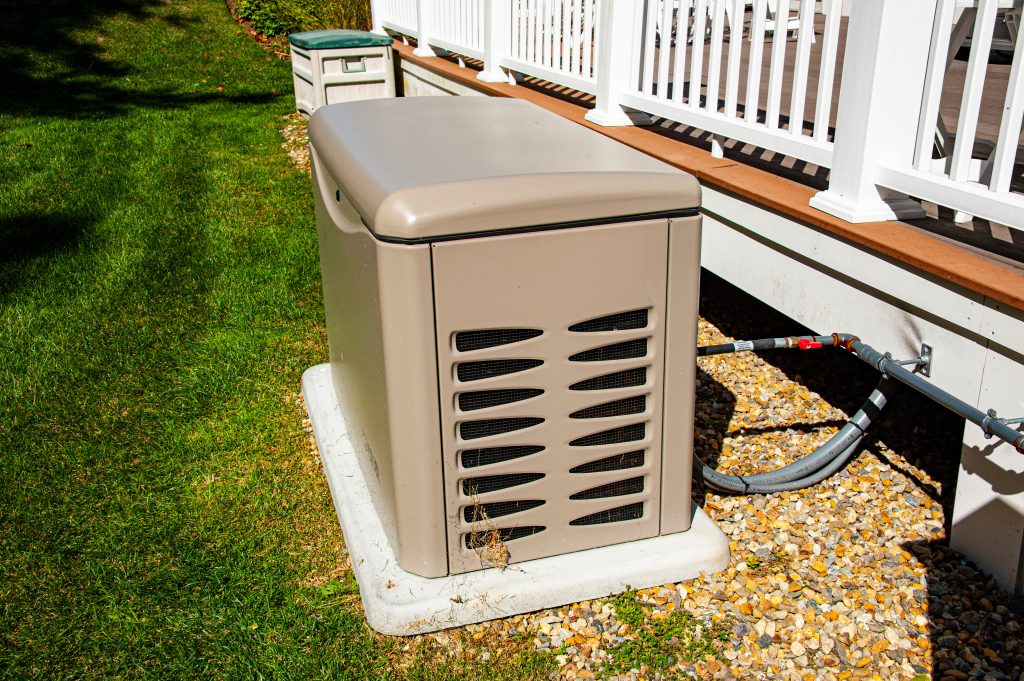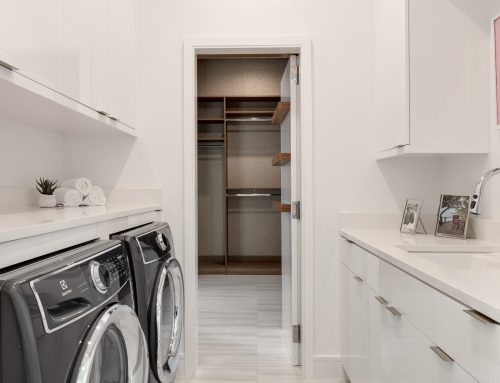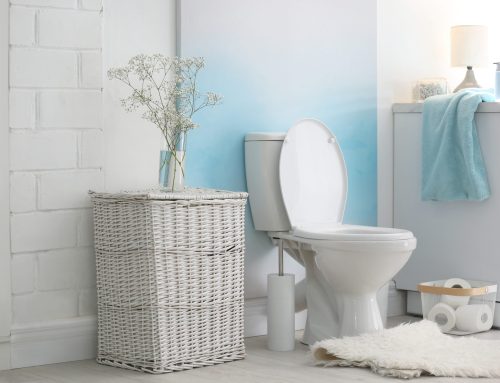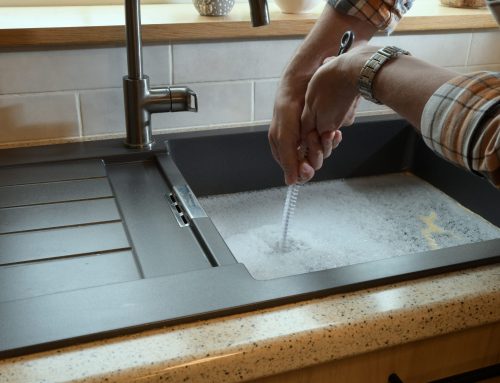
Backup power confidence for Southeastern Wisconsin homes
When storms, ice, or wind take out the grid, Wisconsin homeowners need dependable backup power to keep heat, water, and essentials running. Older homes across Southeastern Wisconsin face unique challenges, from limited panel space to older wiring methods. Choosing the right connection method for your portable or standby generator is the first step toward a safe, clean installation. In this guide, Northern Mechanical explains the differences between a generator transfer switch and a panel interlock, how each affects safety and convenience, what it means for older homes, and how to plan a clean, code-compliant install. You will also learn practical cost ranges and how our team supports a seamless project.
What is a generator transfer switch?
A generator transfer switch is a device that safely shifts selected household circuits or your entire home from utility power to generator power. Installed near your main service equipment, it prevents electricity from backfeeding into utility lines, which can be dangerous for lineworkers and your equipment. The right generator transfer switch also ensures your home does not try to power the grid and that your generator runs only the loads you intend.
Manual vs automatic transfer switches
There are two primary types of generator transfer switch systems used in residential settings.
- Manual transfer switch: You start the generator and flip a lever or switches to move selected circuits from utility to generator power. It is a popular choice for portable generators because it is reliable, cost-effective, and simple to operate during an outage.
- Automatic transfer switch: Often paired with a permanently installed standby generator. The system senses power loss, starts the generator, and shifts your home to generator power automatically. When utility power returns, it switches back and cools down the generator without intervention.
Both types of generator transfer switch solutions are designed for safety and compliance when properly selected and installed by a qualified electrician. For many older Wisconsin homes, manual transfer switches allow you to power the most critical circuits like a furnace, sump pump, well pump, refrigerator, select lights, and outlets without overhauling the entire service.
What is a panel interlock?
A panel interlock is a mechanical device installed on your existing electrical panel that physically prevents the main breaker and the generator backfeed breaker from being on at the same time. With a listed interlock kit, you can backfeed a dedicated breaker from a portable generator inlet, then use your panel breakers to choose which circuits get power. An interlock must be matched to the specific panel model and installed with the proper outdoor inlet, wiring, and labeling.
Because an interlock uses your current panel instead of a separate generator transfer switch, it often costs less and requires less space. It is a strong option for homeowners who want flexibility in deciding which circuits to run during an outage and who have a compatible, modern panel.
Generator transfer switch vs interlock: key differences
- Safety control: Both methods prevent backfeed when installed correctly. A generator transfer switch isolates selected circuits or the whole home. An interlock mechanically blocks the main breaker when the generator breaker is engaged.
- Convenience: An automatic generator transfer switch offers hands-off operation for standby systems. A manual transfer switch or interlock requires you to start the generator and move the switch or interlock.
- Circuit selection: A manual transfer switch feeds a dedicated subpanel or a set of selected circuits. An interlock lets you use your existing breakers, offering more flexibility but requiring careful load management.
- Compatibility: A generator transfer switch works well when panel space is limited or the existing panel is not compatible with interlocks. Interlocks require a compatible panel and a listed kit.
- Future expansion: A transfer switch programmatically manages loads and can be scaled. Interlocks can be limiting if the panel is undersized or already crowded.
- Cost: Interlocks are typically the most budget-friendly. Manual generator transfer switch systems cost more but often include better control and labeling. Automatic transfer switches paired with standby generators cost the most but provide seamless operation.
- Appearance and labeling: Transfer switches create a clean, labeled solution that is easy to use during a stressful outage. Interlocks can also look clean when installed with tidy conduit and clear labels, but require more active load management by the homeowner.
Older Wisconsin homes: what to consider before choosing
Panel type and available space
Many older Wisconsin homes still have 60-amp or 100-amp service, split-bus panels, or even fuse boxes. Some of these panels do not accept listed interlock kits. If your panel is full, nonstandard, or out of production, a manual generator transfer switch feeding a small subpanel for selected circuits may be the smarter, cleaner option. If the panel is modern and compatible, an interlock can be efficient and cost-effective. Northern Mechanical can coordinate a site visit and refer a licensed electrician to evaluate your panel and advise whether a generator transfer switch or an interlock fits your home and budget.
Existing wiring and load priorities
Older homes often include multiwire branch circuits, limited spare breakers, and dedicated equipment like boiler pumps or well pumps. These factors affect which solution works best:
- Critical loads: Furnace or boiler, sump pump, well pump, refrigerator, freezer, Wi-Fi, phone chargers, a few lighting circuits, and medical equipment.
- Starting loads: Motors like well pumps and furnace blowers produce higher startup demand. Your generator size and the method you choose should account for these surges.
- Neutral and grounding: Neutral bonding in the generator and the transfer equipment must be coordinated to meet code and prevent nuisance trips or shock hazards.
A manual generator transfer switch with dedicated circuits makes it easier to label, avoid overload, and ensure critical circuits work every time. An interlock offers flexibility but requires you to manage loads at the panel carefully during an outage.
Weather, placement, and exterior hardware
Wisconsin weather demands durable, weatherproof components. Your outdoor generator inlet should be in a sheltered location, typically on the same side as your service equipment, with a locking connector to prevent accidental disconnection. Conduit runs should be neat and protected. A generator transfer switch or an interlock installation should include clear labeling that anyone in the home can understand during an emergency. Northern Mechanical focuses on clean routing and thoughtful placement when we coordinate with electrical partners so your system looks tidy and works reliably in all seasons.
Fuel source and piping support
If you plan to install a natural gas or LP standby generator with an automatic generator transfer switch, proper fuel piping and pressure are critical. Northern Mechanical specializes in gas piping and can size, install, and pressure test lines to support your generator’s BTU demand. We coordinate with your licensed electrician and the generator manufacturer’s specs to ensure fuel supply is safe and consistent. If you use a portable generator, always operate it outdoors and never in a garage or enclosure.
Safety and code considerations in Wisconsin
Most municipalities in Southeastern Wisconsin follow electrical codes based on the National Electrical Code. The authority having jurisdiction makes final decisions on permits and inspections. No matter which option you choose, plan for a permit, inspection, and installation by a licensed electrician.
- Listed equipment: Use a listed generator transfer switch or a panel-specific, listed interlock kit. Avoid universal or homemade devices.
- Isolation from the utility: Proper transfer equipment must prevent backfeed into the grid to protect workers and property.
- Neutral handling: Depending on whether your generator has a bonded neutral or floating neutral, the installation must be configured to avoid parallel neutrals and shock risk.
- Inlets and cords: Use the correct amperage and twist-lock connectors. Choose outdoor inlets rated for Wisconsin winters.
- Labeling and instructions: Clear labels on the panel, inlet, and switches ensure safe operation by anyone at home.
Northern Mechanical helps homeowners navigate permitting and connects you with qualified electrical partners who install a generator transfer switch or interlock to local standards. Our team also handles gas piping for standby generators and coordinates inspections to keep the project moving.
Cost ranges and timelines
Every home is unique, but the ranges below can help you budget. Actual costs vary with panel condition, wiring complexity, generator size, fuel source, and permit requirements.
- Interlock kit with inlet and wiring: About 500 to 1,500 installed, including a listed interlock, a generator backfeed breaker, outdoor inlet, wiring, and labels.
- Manual generator transfer switch for selected circuits: About 800 to 2,500 installed, depending on the number of circuits, location, and panel accessibility.
- Automatic generator transfer switch with standby generator integration: The transfer switch and integration work often runs 3,500 to 12,000 depending on service size and whether a new service-rated automatic switch is required. Complete standby packages, including the generator and gas piping, regularly range higher based on capacity and brand.
- Possible add-ons: Service upgrade or panel replacement 1,500 to 4,000. Gas piping for standby generators 500 to 1,500. Permits and inspections 50 to 300. Cold weather accessories for standby units vary.
Many interlock or manual generator transfer switch installs can be completed in one day after permits are approved. Standby systems with an automatic transfer switch may take several days due to concrete pads, gas piping, electrical work, and inspections. Northern Mechanical provides realistic schedules and coordinates with your electrician to limit downtime.
Clean installation tips for older homes
- Plan loads first: List your critical circuits and their amperage. This determines generator size and the best transfer method.
- Check panel compatibility: Confirm your panel supports a listed interlock. If not, consider a manual generator transfer switch with a small, dedicated subpanel for critical loads.
- Choose a good inlet location: Keep runs short, sheltered, and accessible. Label the inlet and main panel clearly.
- Prioritize weatherproofing: Use in-use covers, proper fittings, and sealed penetrations to keep out moisture.
- Label everything: Label circuits, procedures, and generator start steps. Keep the generator cord and instructions together.
- Add surge protection: Whole-home or panel-level surge protection helps protect electronics when switching power sources.
- Test under supervision: After install, test transfer procedures with your electrician so everyone in the home understands how to operate the system.
When to choose an interlock vs a generator transfer switch
Interlock makes sense when
- Your main panel is modern, listed, and compatible with a specific interlock kit.
- You use a portable generator and want a budget-friendly solution.
- You prefer flexibility to turn on and off circuits at the panel during an outage.
- You have adequate panel space for a generator backfeed breaker and proper labeling.
A generator transfer switch is the better fit when
- Your existing panel is incompatible with interlocks, full, or obsolete.
- You want a dedicated, clearly labeled set of critical circuits.
- You are planning a standby generator with automatic operation.
- You prefer a tidy, homeowner-friendly interface that reduces mistakes under stress.
How Northern Mechanical supports a seamless project
Northern Mechanical, LLC serves industrial, commercial, and residential clients throughout Southeastern Wisconsin with reliable, affordable plumbing and piping services. For residential backup power projects, our team adds value by coordinating with licensed electricians and providing expert gas piping for standby generators. We focus on clean installs and clear communication so the finished system is safe, code-compliant, and easy to operate.
- Consultation and site visit: We listen to your goals, review your existing panel and mechanical systems, and document critical loads like furnaces, sump pumps, and well pumps.
- Option review: We explain the pros and cons of an interlock versus a manual or automatic generator transfer switch and how each affects your specific home.
- Generator sizing: We help you right-size a portable or standby unit based on startup loads, fuel type, and runtime expectations.
- Gas piping design: For standby systems, Northern Mechanical sizes and installs gas piping for correct pressure and capacity, then coordinates pressure testing and inspections.
- Coordination with electricians: We refer trusted, licensed electricians to install the interlock or generator transfer switch, permitting, and final tie-ins.
- Startup and homeowner walk-through: Together with our partners, we test the system, label components, and teach you how to operate it safely during an outage.
- Ongoing support: Northern Mechanical offers 24/7 emergency service for plumbing and piping issues and can coordinate maintenance reminders for your backup power setup.
Frequently asked questions
Is an interlock legal where I live?
Many local authorities accept listed, panel-specific interlock kits installed by licensed electricians. Always confirm with your municipality. If your panel is incompatible or your inspector prefers transfer equipment, a manual generator transfer switch is usually the next best option.
Can I plug my generator into a dryer outlet?
No. That method is unsafe, illegal, and can backfeed the grid. Use a listed inlet and either a generator transfer switch or a proper interlock installation.
Will a generator transfer switch protect my electronics?
A properly installed system delivers stable power when used within generator capacity. Add whole-home surge protection for an extra layer of defense.
How big should my portable generator be?
For essentials in many older homes, a 4,000 to 7,500 watt portable generator can often handle a furnace blower, fridge, sump pump, lights, and electronics. If you have a well pump or larger loads, size up. A licensed electrician can calculate specific demand and match it with the correct generator transfer switch or interlock configuration.
What about neutral bonding?
Portable generators vary. Some have a bonded neutral, others are floating. The installation must be configured to avoid parallel neutrals and nuisance trips. Your electrician will set this up correctly when installing a generator transfer switch or interlock.
Can I DIY an interlock or transfer switch?
Backup power equipment requires permits and inspection. For safety and insurance purposes, hire a licensed electrician. Northern Mechanical can coordinate the project and handle any gas piping needs for standby systems.
How often should I test my setup?
Run a monthly exercise for portable units and follow your standby generator manufacturer’s maintenance schedule. Test the transfer procedure with your family so everyone knows the steps.
Get a tailored quote for your Wisconsin home
Every house is different, especially older homes with unique panels and wiring. Northern Mechanical will help you compare an interlock to a manual or automatic generator transfer switch, review the pros and cons for your specific setup, and provide a clean, code-compliant plan. From gas piping for standby units to coordination with licensed electricians, our service-focused team delivers a smooth experience and a system you can trust when the power goes out.
Reach out to Northern Mechanical for a no-pressure consultation, cost estimate, and timeline. We proudly serve Southeastern Wisconsin with dependable plumbing and piping solutions, including 24/7 emergency support. Let us help you secure safer, cleaner backup power with the right generator transfer switch or interlock solution for your home.



